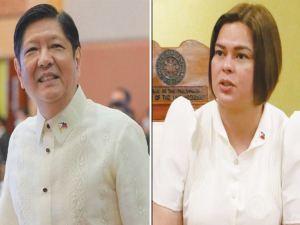Economic ministers of the Association of Southeast Asian Nations (ASEAN) kicked off a four-day meeting in Manila on September 7 to discuss ways on how to further strengthen economic ties.
The ministers also aim to further integrate trade and investments in Southeast Asia.
“Our meeting this week is vital to the region’s messaging on the success of ASEAN as a bloc. We have achieved critical mass to take ASEAN higher as our economies are growing faster than most of the rest of the world,” said Philippine Trade Secretary Ramon Lopez at the opening ceremony of the 49th ASEAN Economic Ministers’ Meeting and related Meetings.
The ASEAN economic ministers will also have discussions with their counterparts from Australia, Canada, China, Hong Kong, India, Japan, Korea, New Zealand, Russia, and the United States.
The discussions with Canada and other partners will tackle measures to advance regional economic development.
“As ASEAN economic ministers, we are gathered today to send a positive signal amid a backdrop of rising trade policy uncertainties,” Lopez said, stressing the need to reaffirm the importance of integrating ASEAN into the regional and global economy.
He said ASEAN will maintain an open and outward-oriented perspective through free trade agreements (FTAs) with Australia, China, India, Japan, South Korea and New Zealand.
ASEAN also has cooperation mechanism with dialogue partners such as Canada, the European Union and the United States.
ASEAN ministers will also meet their counterparts from Australia, Canada, China, India, Japan, South Korea, New Zealand, Russia, and the United States to exchange views on global and regional economic developments and discuss trade agreements and economic cooperation mechanisms with these partners.
Lopez said it is expected that by 2050, the ASEAN economy will amount to over 9.2 trillion U.S. dollars, making it the fourth largest in the world.
Lopez said there is still a lot of work to be done.
In 2017 and beyond, he said ASEAN “should be cognizant of the changing geostrategic landscape that presents both opportunities and challenges.”
As a formal community, the 10-nation ASEAN bloc wants to create more free movement of trade and capital in an area of 625 million people with a combined economic output of 2.6 trillion U.S. dollars.
The ASEAN Economic Community (AEC) aims to achieve high economic growth in the region by increasing trade, investment and job creation.
Since the adoption of the AEC Blueprint 2025 last year and the Consolidated Strategic Action Plan (CSAP) in February this year, the Philippines wants to push for concrete measures that would further solidify the bloc’s community building strategy.
The Philippines, which holds the ASEAN rotating chairmanship this year, wants ASEAN to pursue an “inclusive, innovation-led growth.”
To achieve this goal, the Philippines stressed the need to further increase trade and investment, integrate the micro, small and medium enterprises (MSMEs) in the global value chains, and develop “an innovation-driven economy” within the 10-nation bloc.
The Philippines is also introducing inclusive business in ASEAN, mainstreaming women economic empowerment in AEC, and supporting cross-border trade and eco-system of entrepreneurship based on technology and innovation through e-commerce and the ASEAN declaration on innovation.
The Philippines has listed priority deliverables as it chairs the 49th ASEAN Economic Ministers’ Meeting (AEM) and Related Meetings.
Among the priority deliverables that the country eyed for this AEM include strategic measures for an ASEAN-wide Self-Certification Scheme; pushing for ASEAN Seamless Trade Facilitation Indicators (ASTFI) and Review Mechanism for ASEA Economic Community (AEC) to monitor each member state’s compliance to the AEC commitments; ASEAN Trade in Services Agreement (ATISA) negotiations; strengthening investment flows in the region through the Focused and Strategic (FAST) Action Agenda on Investment; and launching the ASEAN Roll-on Roll-off Shipping Network.
The measures support one of the thematic priorities of the country’s ASEAN chairmanship of inclusive and innovation-led growth.
Economic ministers and other delegates for the 49th AEM Meeting and Related Meetings will be arriving in the country for their meeting that will run from Sept. 6 to 11 in Pasay City.
“At the end of the day, what we will value is how these meetings concretely translate to creating more and better opportunities for ASEAN citizens to experience inclusive growth that leads to region-wide prosperity, as we partner for change and engage the world,” Lopez noted.
The economic ministers will also engage in a dialogue with the private sector and business councils such as ASEAN Business Advisory Council , Canada-ASEAN Business Council, ASEAN-Korea Business Council, US-ASEAN Business Council , Australian Chamber of Commerce, Australia-New Zealand Business Council , Federation of Japanese Chambers of Commerce and Industry Association, East Asia Business Council and ASEAN-India Business Council.








